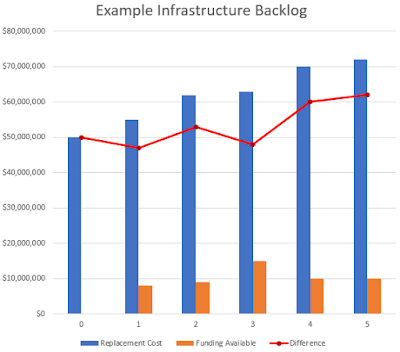Today is a continuation of my notes about Monday night’s Langley City Council meeting.
A public hearing was held on May 13th to gather input from residents about a proposed 34-unit, 4-storey apartment building which is proposed to be located at the northwest corner of Douglas Crescent and 208th Street (20755, 20765 Douglas Crescent and 5453 208 Street). For more information on this proposed project, please read the meeting note about that public hearing.
On Monday, council gave third reading for the rezoning bylaw to support this proposed apartment building.
 |
| Location of proposed building at 5443, 5453, 5461, 5469 Brydon Crescent. Select map to enlarge. |
 |
| Rendering of proposed building from Brydon Crescent. Select image to enlarge. |
Council also gave first and second reading for a rezoning bylaw which would accommodate a proposed 115-unit, 4-storey apartment building along Brydon Crescent. This will allow for a public hearing to be scheduled about this proposed rezoning and building.
Council also received at letter from Burnaby city council asking that we support their motion calling on the provincial government to update the legislation on what kinds of financial investments municipalities can make in BC. Cities put money into capital project reserve fund that don’t necessarily get used right away. In Langley City, we save money over multiple years for larger projects like the Timms Community Centre. Currently, there are tight restricts on how this money can be saved and invested which makes it virtually impossible for municipalities to lose money. Burnaby council wants to loosen these rules. Langley City council voted unanimously to have Langley City staff provide their opinion about this motion before being considered further by council.
As you may be aware, TransLink’s Mayors’ Council has launched the “Cure Congestion” campaign to get all federal parties to commit to providing stable and on-going funding for transit expansion in our region. They are calling on all federal parties to commit to investing $3.4 billion annually to provide communities across Canada stable transit funding. This would work out to $375 million annually for Metro Vancouver.
If the federal government moves forward with what the Mayors’ Council is calling the “Congestion Relief Fund”, it would ensure that phase three of TransLink’s 10-Year Vision continues to move forward, as well as future transit initiatives. It is important that phase three of the 10-Year Vision gets funded as that is the phase that gets SkyTrain to Langley City.
The Mayors’ Council is seeking the support of all councils in Metro Vancouver for their “Cure Congestion” campaign. The following lengthy motion was put forward for councils in our region to consider.
WHEREAS ridership on transit in Metro Vancouver is exploding, and another one million commuters are coming to our region over the next 20 years;
WHEREAS the 10-Year Vision for Metro Vancouver Transit and Transportation is making historic investments to improved regional bus, SkyTrain, SeaBus, West Coast Express and HandyDART services which will help keep the region moving, reduce the impact of population growth on regional GHG emissions, and improve access to affordable housing options;
WHEREAS Metro Vancouver’s North American-leading ridership growth is out-pacing the expansion planned in the 10-Year Vision, leading to continued overcrowding pressures on transit, and congestion on our roads;
WHEREAS to support these new riders and planned population growth, the remaining projects in the 10-Year Vison and the next wave of regional transit and transportation priorities to be identified in the Transport 2050 planning process must be funded and approved quickly to avoid losing momentum on addressing overcrowding and congestion;
WHEREAS local governments via the Mayors’ Council establish plans for new transit/roads/active transportation projects and infrastructure for the region, with reliable federal and provincial funding being critical to making projects a reality;
WHEREAS our region needs the next federal government to continue its successful partnership with the Mayors’ Council on Regional Transportation, TransLink and the Province of B.C., so our region doesn’t go backwards with worsening road congestion and overcrowding on transit;
WHEREAS in April, 2019, the Mayors’ Council released its federal election platform, “Cure Congestion,” that calls on national parties to commit to work in partnership to cure congestion in Metro Vancouver;
WHEREAS the Cure Congestion platform asks all federal parties to commit to establishing a Congestion Relief Fund that would deliver $3.4 billion annually across Canada based on ridership, delivering approximately $375 million annually to TransLink;
WHEREAS the Congestion Relief Fund will provide a permanent, predictable source of federal funding that can be invested alongside TransLink and provincial government commitments to accelerate completion of the 10-Year Vision for Metro Vancouver Transit and Transportation and start the next phase of projects to be identified in the Transport 2050 planning process to improve the transit and transportation network in every corner of our region;
THEREFORE BE IT RESOLVED:
THAT City of Langley Council supports the Mayor’s Council on Regional Transportation’s Cure Congestion campaign;
AND THAT candidates running in the 2019 federal election for the riding of Cloverdale-Langley City be urged to support the call for a Congestion Relief Fund.
Councillor Storteboom and Martin were concerned that the motion did not explicitly call out the Surrey-Langley SkyTrain line as a priority. I commented that the 10-Year Vision includes this SkyTrain line as a critical component of phase three even if it wasn’t explicitly in the motion.
In the end, the motion was passed by council with Councillor Storteboom opposed.



























